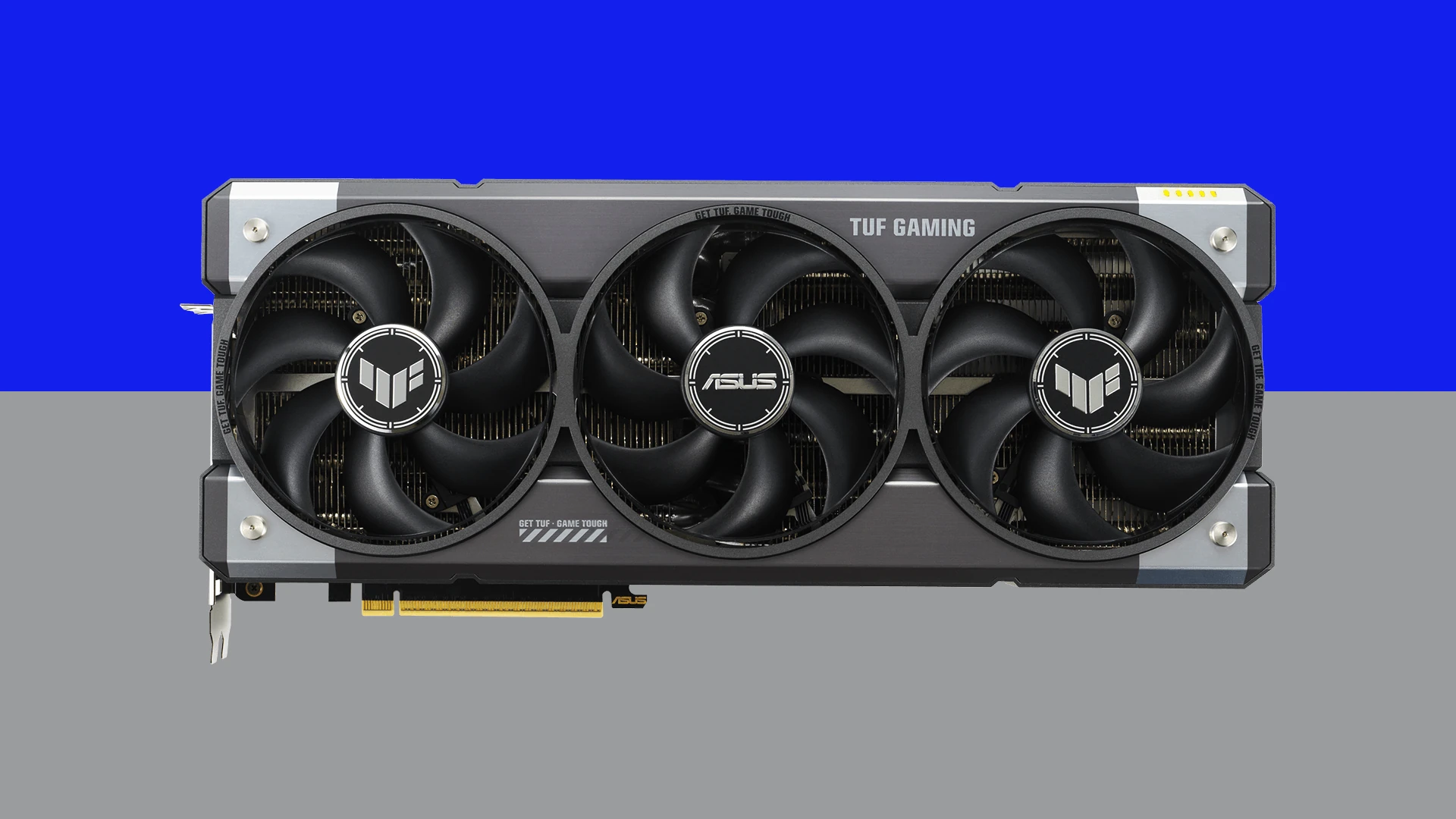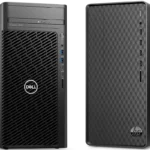The landscape of computer hardware and accessories in 2025 is undergoing a transformative leap, driven by breakthroughs in AI integration, modular design, and raw performance power. Whether you’re a gamer, creative professional, or tech enthusiast, the latest developments promise to redefine what your PC can do — faster, smarter, and more flexibly than ever before.
Next-Gen GPUs and CPUs: Powerhouse Performance Meets AI Intelligence
This year, the spotlight shines brightly on the launch of NVIDIA’s GeForce RTX 50 series, headlined by the RTX 5090. What sets this generation apart is not just the staggering raw power but also the innovative design — notably the compact external GPU housing known as the XG Mobile. This allows users to harness desktop-class graphics performance on portable laptops, blurring the lines between mobility and power.

AMD is responding with a bold push into AI-accelerated processing. The Ryzen AI 9 HX 370 CPU integrates a neural coprocessor capable of delivering up to 50 TOPS (trillions of operations per second), enabling real-time AI tasks like upscaling, noise reduction, and intelligent workload management directly on the chip. Paired with GPUs like the Nvidia GeForce RTX 5070, this combo is tailored for demanding workflows such as 3D modeling, video editing, and immersive gaming.
This fusion of AI and brute force computing power marks a pivotal shift from traditional CPU/GPU architectures to systems that can intelligently optimize tasks on the fly, offering smoother, faster, and more efficient computing.
Memory and Chipset Innovations: Speed and Efficiency Redefined
Memory technology is accelerating rapidly with the introduction of DDR6 and GDDR7 standards. These new memory types promise bandwidth and latency improvements that will significantly benefit data-heavy applications, from AI training to high-resolution gaming and professional rendering.
Supporting these advancements are new chipsets designed for upcoming CPU architectures — Intel’s Panther Lake and AMD’s Zen 6 — both engineered to leverage these faster memory standards, enhanced PCIe lanes, and improved power efficiency. This means PCs built on these platforms will not only be faster but also more energy-conscious, a critical factor as sustainability becomes a core concern in tech development.
Connectivity and Modularity: The Rise of Plug-and-Play Expansion
Perhaps one of the most exciting trends is the adoption of Compute Express Link (CXL), a high-speed interconnect technology that enables unprecedented modularity. Imagine upgrading your desktop’s capabilities by simply plugging in new accelerators, memory modules, or storage devices without complex BIOS tweaks or compatibility headaches.
This modular approach is poised to revolutionize workstation and gaming PC design, allowing users to tailor their machines dynamically — a boon for professionals who need to scale performance on demand and gamers who want to future-proof their rigs.
AI at the Silicon Level: Hardware Designed for Intelligence
Artificial Intelligence is no longer just software running on general-purpose chips. In 2025, AI is deeply embedded into the silicon itself. From neural coprocessors in CPUs to AI-optimized GPUs, hardware is now purpose-built to accelerate machine learning tasks.
This hardware-level AI integration enables features like real-time language translation, advanced image and video processing, and adaptive system tuning that adjusts performance based on workload and thermal conditions — all enhancing user experience and productivity.
Industry Showcases: A Glimpse into the Future
Events like CES 2025 and Computex 2025 have showcased over 250 new hardware innovations, underscoring the industry’s commitment to pushing boundaries. Highlights include AI-driven gaming peripherals, ultra-efficient power supplies, and next-gen SSDs with blistering speeds and durability.
Major players AMD, Intel, and Nvidia continue to lead the charge, unveiling components that not only deliver raw performance but also smarter, more energy-efficient designs. These advancements reflect a broader trend toward hardware that supports AI workloads natively while maintaining compatibility with traditional computing tasks.
Why 2025 Is a Landmark Year for PC Hardware
In sum, 2025 is shaping up as a watershed moment for computer hardware and accessories. The convergence of AI integration, modular connectivity, and cutting-edge performance technologies means users can expect PCs that are not only faster and more powerful but also smarter and more adaptable.
Whether upgrading your gaming rig, building a professional workstation, or simply staying ahead in the fast-evolving tech landscape, the innovations emerging this year promise to deliver unprecedented flexibility, efficiency, and capability.
For anyone passionate about technology, keeping an eye on these trends will be essential — the future of computing is arriving faster than ever.
What Is an Optical Drive?
Have you ever wondered what makes your computer play DVDs or install software from discs? The answer is an optical drive. An optical drive is a device that reads and writes data on optical discs like CDs, DVDs, and Blu-ray discs using laser technology. These drives have been standard in computers for decades, allowing us to enjoy music, watch movies, install programs, and store important files.
While not as common in newer computers as they once were, optical drives still serve important purposes for many users. They connect either internally (built into your computer) or externally (plugged in via USB). The technology works by using a laser beam to read tiny pits on the disc surface, converting these physical marks into digital data your computer can understand.
The type of optical drive you have determines which discs it can read. Basic CD drives only read CDs, while DVD drives can handle both CDs and DVDs. Blu-ray drives offer the most compatibility, working with all three disc types while providing the highest storage capacity for your media needs.
Key Takeaways
- Optical drives use laser technology to read and write data on CDs, DVDs, and Blu-ray discs.
- These devices can be internal (built into computers) or external (connected via USB).
- Different optical drive types offer varying compatibility with disc formats and storage capacities.
Understanding Optical Drives
Optical drives are essential computer components that use laser technology to read and write data on optical discs. These devices have been a standard feature in computers for decades, allowing users to access various types of media including music, videos, and software.
Components and Function
An optical disc drive (ODD) consists of several key components that work together to read and write data. The most important part is the laser assembly, which contains a precise laser beam that reflects off the disc surface to read information. A spindle motor rotates the disc at variable speeds depending on where data is being read.
The drive also contains a lens system that focuses the laser beam precisely onto the disc surface. A tracking mechanism moves the laser assembly across the disc from the center to the outer edge.
When reading data, the laser detects microscopic pits and lands on the disc surface, which represent the binary data (1s and 0s). The reflected light is captured by a photodetector that converts these light variations into electrical signals the computer can process.
Types of Optical Drives
Several types of optical drives have evolved over the years, each supporting different formats and capabilities:
- CD Drives: The original optical drives that could only read CDs (CD-ROM) or could also write to CD-R and CD-RW discs (CD burners)
- DVD Drives: More advanced drives capable of reading and writing to DVD media with higher storage capacity than CDs
- Blu-ray Drives: The latest generation that uses a blue-violet laser to read high-density Blu-ray discs
Optical drives can be internal (installed inside a computer case) or external (connected via USB). External optical drives have become more popular as many modern laptops no longer include built-in drives.
Most newer optical drives are backward compatible, meaning a Blu-ray drive can typically read both DVDs and CDs, though older CD drives cannot read newer format discs.
Optical Disc Formats
Optical discs come in various formats with different storage capacities and functions:
CD Formats:
- CD-ROM: Read-only with 700MB capacity
- CD-R: Recordable once
- CD-RW: Rewritable multiple times
DVD Formats:
- DVD-ROM: Read-only with 4.7GB to 8.5GB capacity
- DVD-R/DVD+R: Recordable once
- DVD-RW/DVD+RW: Rewritable
- DVD-RAM: Random access memory variant with higher rewrite cycles
Blu-ray Formats:
- BD-ROM: Read-only with 25GB to 50GB capacity
- BD-R: Recordable once
- BD-RE: Rewritable
Each format offers different benefits. CD media remains affordable but has limited capacity. DVDs provide more storage for videos and large files. Blu-ray discs offer the highest capacity, making them ideal for HD video and data archiving.
Optical Drives in Use
Optical drives serve daily functions for both home and business users. They help people access media, backup data, and install software from physical discs.
Software and Media Playback
Optical disk drives are commonly used to run software and play media content stored on discs. DVD drives and CD-ROM drives allow users to watch movies, listen to music, and install programs directly from physical media.
Many computers come with pre-installed DVD-ROM or DVD±RW drives that can read and sometimes write to multiple disc formats. These drives use laser technology to read data encoded on the disc surface.
For media enthusiasts, optical drives provide a way to watch movies in high definition, especially with Blu-ray drives that offer superior video quality. Home theater systems often incorporate optical drives for this purpose.
Even as streaming services gain popularity, optical drives remain important for accessing media in areas with limited internet or for viewing content not available on streaming platforms.
Data Storage and Transfer
Optical drives offer reliable options for data storage and backup. DVD±RW and CD-RW formats allow users to write, erase, and rewrite data multiple times, making them useful for regular backups.
A typical DVD can store 4.7GB of data, while dual-layer discs can hold up to 8.5GB. This capacity makes them suitable for backing up important documents, photos, and small video files.
For computers without built-in drives, external optical drives provide flexibility. These portable USB devices can be shared between multiple computers and taken anywhere they’re needed.
Many businesses still use optical media for distributing software, sharing large files, or archiving important documents. The physical nature of discs provides a tangible backup that isn’t vulnerable to cloud service outages or hacking.
Optical discs also offer longevity advantages, with properly stored discs potentially lasting decades, unlike some digital storage methods that require migration every few years.
Frequently Asked Questions
Optical drives serve many functions in computers beyond just reading DVDs. These devices have evolved over time and come in various types to meet different needs, though their prominence in modern devices has declined.
What functions do optical drives serve in computers?
Optical drives primarily read and write data to optical discs. They allow users to install software, play music CDs, watch DVD movies, and back up important files.
Some advanced optical drives can burn or write data to blank discs. This function lets users create their own music CDs, backup DVDs, or data discs for storage and sharing.
Many optical drives also support booting a computer from a disc. This feature helps with installing operating systems or running recovery tools when a computer’s main storage fails.
How does an optical drive differ from a DVD drive?
A DVD drive is actually a type of optical drive. The term “optical drive” is broader and includes CD drives, DVD drives, and Blu-ray drives.
All optical drives use laser technology to read data, but they differ in the type of laser used. DVD drives use a red laser with a shorter wavelength than CD drives, allowing them to read more densely packed data.
A DVD drive can typically read both DVDs and CDs, whereas a CD-only drive cannot read DVDs. This backward compatibility is a common feature among newer optical drive technologies.
What types of optical drives are commonly available?
CD drives were the first widely adopted optical drives, reading discs that store about 700MB of data. These are rarely sold as standalone products today.
DVD drives became popular in the late 1990s and can store up to 4.7GB on a single-layer disc. DVD burners that can write to blank DVDs are still fairly common.
Blu-ray drives represent the most advanced widely available optical drive technology. They can store 25GB on a single-layer disc and 50GB on dual-layer discs.
Can you provide examples of devices with optical drives?
Desktop computers often include optical drives, especially models designed for business or home entertainment purposes. Many gaming PCs also feature high-speed optical drives.
Gaming consoles like the PlayStation 4 and Xbox One included optical drives for playing game discs. Even the newer PlayStation 5 offers a version with a Blu-ray drive.
External USB optical drives are popular accessories for laptops that don’t have built-in drives. These portable devices can be shared between multiple computers as needed.
What implications does the absence of an optical drive on a laptop have?
Without an optical drive, laptops cannot directly read or write to CDs, DVDs, or Blu-ray discs. Users need an external drive for these tasks.
The absence allows for thinner, lighter laptop designs with better battery life. Manufacturers can use the space for other components or simply reduce the device’s size.
Software installation now typically happens through downloads rather than discs. Most programs, games, and operating systems are available digitally, reducing the need for optical media.
Are optical drives becoming obsolete in modern computing?
Optical drives are increasingly rare in new computers, especially laptops and ultrabooks. Many manufacturers have eliminated them to make devices thinner and lighter.
Cloud storage and high-capacity USB drives have largely replaced optical discs for data storage and transfer. These alternatives offer greater convenience and often more storage space.
Some industries still rely on optical media for archiving, distribution, or specialized applications. However, for everyday computing, optical drives have become less essential as streaming services replace physical media.







